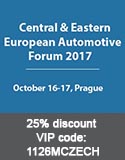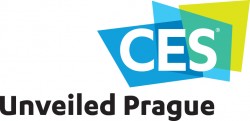Application – Call II
The 2nd Call for proposals of Application programme was announced on 11March 2016. Applications are submitted via the IS KP14+ internet application. Applications are received from 11 March 2016 until 30 April 2016.
Basic characteristics:
Who can apply (aid recipients)
- The aid applicant/applicants; beneficiary/beneficiaries (hereinafter “applicant” and “beneficiary”) may be small and medium-sized enterprises (hereinafter “SMEs”) and research and knowledge-dissemination organisations (i.e. entities that meet the definition of a research and knowledge-dissemination organisation pursuant to Article 2(83) of Commission Regulation (EU) No 651/2014); aid applications may be submitted by individual entities (enterprises) or consortia comprising several partners – enterprises and research and knowledge-dissemination organisations; in the case of consortia, one business entity from the consortium always acts as the main beneficiary/applicant, while other entities act as co-beneficiaries or project partners that have their own budgets and possibly different aid intensities.
How much can be obtained for each project (form and amount of aid)
Aid amount:
- The planned allocation for the call is CZK 40 000 000.
- Aid for a project is provided in an amount of no less than CZK 1 million and no more than CZK 25 million.
Aid intensity:
- In the aid application, aid will always be indicated as an amount equal to a percentage share of the eligible expenditure.
- The maximum intensity of public aid is specified in the following table, which shows the key categories of supported activities and the size of the enterprise:
|
|
Aid under GBER |
|
|
Category of activity |
Small enterprise |
Medium-sized enterprise |
|
Industrial research |
80% |
75% |
|
Experimental development |
65% |
50% |
- The share of the activities of business entities in the overall activities of the project (eligible expenditure) must be at least 50%.
- The share of overall industrial research activities in the overall activities of the project (eligible expenditure) must not exceed 50%.
- Within a regime not constituting public aid, aid is provided in accordance with Communication from the Commission, Framework for State aid for research and development and innovation (2014/C 198/01)13 (hereinafter the “Framework”), i.e. for entities that meet the definition of a research and knowledge-dissemination organisation. Here, maximum aid intensity must not exceed 75% of the total eligible expenditure of the research organisation, regardless of the size of the research organisation and the place of implementation.
|
|
Aid that does not constitute public aid |
|
Category of activity |
Research organisation |
|
Industrial research |
75% |
|
Experimental development |
75% |
- Participation of a research organisation is not mandatory in the project.
- The maximum aid intensity for the entire project is limited to 70%.
For what aid can be obtained (supported activities)
- Implementation of industrial research and experimental development within the meaning of Article 25 of Commission Regulation (EU) No 651/2014 of 17 June 2014 declaring certain categories of aid compatible with the internal market in application of Articles 107 and 108 of the Treaty (hereinafter “Commission Regulation No 651/2014”).
- Within an implemented project, at least one of the results must be achieved – working prototype, pilot plant, verified technology, software, utility model, industrial design or other R&D results that can be assessed in qualitative terms.
- Within this call, aid will only be provided for implementing projects that participate in international cooperation through the IraSME international network.
Which costs can be supported (eligible costs)
- Personnel costs: salaries and insurance for researchers, technicians and other auxiliary personnel to the extent necessary for the purposes of the project.
- Travel costs.
- Costs of instruments, devices and equipment in the form of depreciation, to the extent and for the period used for the purposes of the project.
- Costs of contract research, knowledge and patents bought or licensed from outside sources at arm’s length conditions, as well as costs of consultancy and equivalent services used exclusively for the purposes of the project.
- Additional overheads and other operating costs, including costs of materials, supplies and similar products incurred directly as a result of the project.
Attached files
| Description | Type | Size | Date |
|---|---|---|---|
Application – Call II - resume |
265.51 kB | 30 Mar. 2016 |








